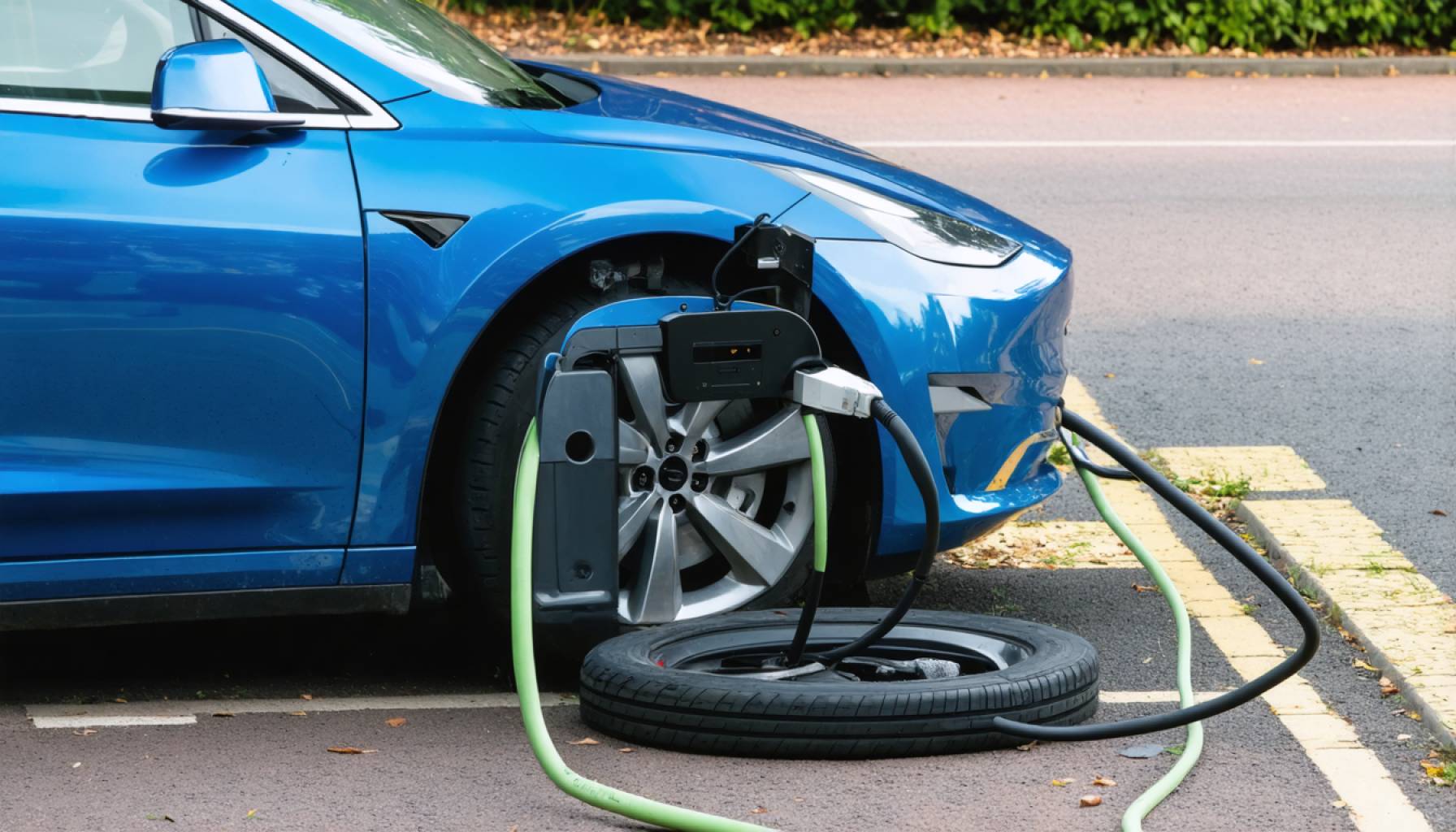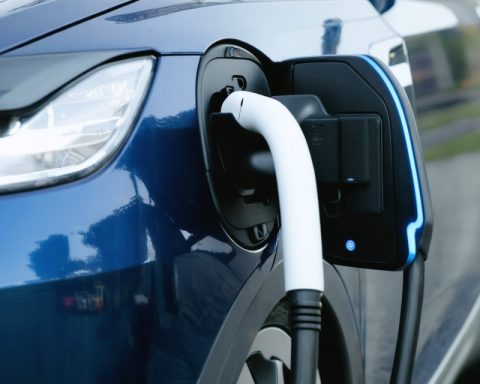- Thefts of EV charging cables are rising in the West Midlands, posing a threat to the electric vehicle revolution.
- InstaVolt reported 33 incidents, resulting in £410,000 in damages, highlighting the seriousness of the problem.
- EV owners are frequently finding charging points stripped of cables, impacting their daily commutes and green commitments.
- The demand for stolen cables has created an illicit market, pressuring companies like InstaVolt and Osprey to enhance security.
- Security measures include CCTV, floodlights, alarm systems, and traceable cable sheaths.
- West Mercia Police are implementing proactive strategies like mapping charging points to deter and address cable thefts.
- The situation illustrates the challenges on the path to sustainability, requiring community and corporate determination and innovation to overcome.
In the quiet hum of progress, a new challenge has emerged, threatening to pull the plug on the electric vehicle revolution sweeping across the West Midlands. The theft of EV charging cables has surged, casting a shadow over the region’s commitment to a cleaner, greener future. This modern-day pilfering spree isn’t just a minor inconvenience; it’s a growing menace with ramifications that ripple across both drivers and businesses.
The statistics do not lie. InstaVolt, a leading company managing EV charging points, has reported that its sites have been targeted 33 times, resulting in a significant financial setback amounting to £410,000. The thefts have become a shared woe in the industry, echoing into the daily lives of countless EV owners. As commuters and environmental advocates, these drivers face the grim reality of finding charging points stripped of their essential cables, rendering their vehicles powerless.
The distinct click and whirr of an EV cable connecting to a vehicle is increasingly being replaced by shock and disbelief as drivers like Sunney Singh and Jo Malam find themselves stranded, unable to power up their eco-friendly rides. The silver strands of this crucial technology are rapidly becoming prime targets for thieves seeking easy gain. Instigated by the promise of quick cash, the illicit market for stolen cables has found its niche, despite efforts by companies like InstaVolt and Osprey to stem the tide.
Amid this deluge of petty crime, a concerted response is emerging. Enhanced security measures now blanket many areas with the protective gaze of CCTV cameras and the persistent glow of floodlights. Alarm systems lie in wait, ready to disrupt any attempted theft, while high-tech cable sheaths embedded with traceable liquids offer the promise of turning the tables on perpetrators.
The challenge is clear, yet so is the commitment from authorities like West Mercia Police, who have pledged proactive measures to identify culprits and prevent further offences. Mapping charging points has become a keystone of their strategy, enabling quick responses and deterrence in what is now being termed a “new and emerging crime.”
The lesson this crisis teaches is stark: the road to a sustainable future is not without its potholes. Yet, as the community rallies, from individual drivers to giant corporations, the resolve to overcome these hurdles shines bright. In the fight against those who would hinder this transition, innovation meets vigilance, ensuring that the path toward a sustainable future remains lit.
As the West Midlands grapples with this growing challenge, its citizens and businesses alike must stand vigilant and committed, proving that the march toward a sustainable future cannot be so easily unplugged.
The Hidden Threat to the EV Revolution: How Cable Theft is Powering Down Progress
Understanding the Surge in EV Charging Cable Theft
The rise of electric vehicles (EVs) heralds a cleaner, greener future. However, a new challenge has emerged that threatens to derail progress—an alarming increase in EV charging cable thefts, particularly in the West Midlands. This criminal activity is more than just an inconvenience; it poses a significant threat to the adoption and operation of electric vehicles.
Why are EV Charging Cables Being Targeted?
1. High Copper Content: EV charging cables contain valuable copper, which thieves can strip and sell as scrap. This makes them an attractive target for quick cash.
2. Lack of Awareness: Many consumers and businesses are still unaware of the potential for theft, leading to inadequate security measures at charging stations.
3. Resale Opportunities: Stolen cables can sometimes be resold at a fraction of the cost, providing a financial incentive for theft.
Security Measures and Industry Response
1. CCTV and Floodlights: To deter theft, companies such as InstaVolt have implemented enhanced security at charging sites, deploying CCTV cameras and bright floodlighting.
2. Traceable Technologies: Some cables now come with embedded traceable liquids, allowing authorities to track stolen goods more effectively.
3. Alarm Systems: Alarms triggered by unauthorized interference can alert local authorities or security personnel to potential theft in real-time.
4. Community and Law Enforcement Coordination: West Mercia Police and others have adopted proactive measures to map out vulnerable areas and respond quickly to theft reports.
How-To Steps & Life Hacks for Protecting Your EV Cables
– Invest in Lockable Cables: Use charging cables with integrated locks to deter opportunistic thieves.
– Park in Well-Lit Areas: Always park your EV in well-lit areas where there is high foot traffic.
– Home Security Camera Systems: If charging at home, install a security camera to monitor your charging area.
– Stay Informed: Join EV owner groups or forums to stay updated on security tips and latest trends in cable protection.
Real-World Use Cases
– Business Owners: Installing sophisticated security at commercial charging stations to safeguard customer access.
– Municipalities: Local governments can support community charging stations by investing in comprehensive security and public awareness programs.
Future Insights & Predictions
The frequency and sophistication of cable theft might increase, prompting a wave of technological advancements in theft prevention and detection. Municipalities could integrate smart urban infrastructure to enhance overall vigilance and deter potential thieves.
Controversies & Limitations
While theft prevention technologies are evolving, they can add significant costs to charging infrastructure, and widespread implementation remains challenging. Some argue whether the responsibility of security should lie primarily with consumers or providers of charging services.
Conclusion and Recommendations
The menace of EV charging cable theft is a complex issue requiring collective action. Drivers, businesses, and policymakers must bolster vigilance and innovation to safeguard this critical part of the electric vehicle ecosystem. By adopting best practices in security and staying informed, we can help ensure that the journey towards sustainability continues to progress smoothly.
For more insights into sustainable practices and how to secure your electric vehicle, visit InstaVolt to learn more about their efforts in advancing EV infrastructure.
















